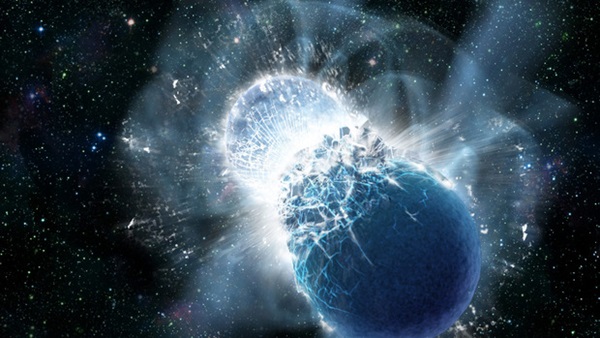
The Laser Interferometer Gravitational-wave Observatory (LIGO) famously detects gravitational waves by looking at the collisions of black holes. It also looks at collisions of other cosmic bodies, such as when it detected the first observed merger between two neutron stars in 2017. Now, a team of astronomers has looked back at older data to observe what happens during these epic impacts.
When two neutron stars collide, the impact creates an explosion — not a supernova, which is what happens when a star dies, but a kilonova. The merging of the neutron stars gives off massive bursts of gamma rays and electromagnetic radiation, but the process isn’t purely destructive. It also creates, by forging heavy metals like platinum and gold. In fact, a kilonova forms several planets’ worth of heavy metals in one swoop, and it is believed that this is how the gold on Earth was created.
Since scientists observed the neutron star merger in 2017, they have learned more about what a kilonova would like like to us here on the Earth. And this has allowed them to look back at older data and spot previous kilonovae as well. There was a gamma-ray burst observed in August 2016, named GRB160821B, and recent re-examination of the data showed that a previously unnoticed kilonova had in fact occurred.
“The 2016 event was very exciting at first,” Eleonora Troja, lead author of the study, said in a statement. “It was nearby and visible with every major telescope, including NASA’s Hubble Space Telescope. But it didn’t match our predictions — we expected to see the infrared emission become brighter and brighter over several weeks.”
That’s not what happened though. “Ten days after the event, barely any signal remained,” Troja continued. “We were all so disappointed. Then, a year later, the LIGO event happened. We looked at our old data with new eyes and realized we had indeed caught a kilonova in 2016. It was a nearly perfect match. The infrared data for both events have similar luminosities and exactly the same time scale.”
As the data from the 2016 event looks so similar to the data from the 2017 event, the researchers are fairly confident that the 2016 event was also caused by the merging of two neutron stars. There are other ways to generate a kilonova, such as the merging of a black hole and a neutron star, but scientists think that this would likely generate different observations in terms of X-ray, infrared, radio and optical light signals.
The findings are published in the journal Monthly Notices of the Royal Astronomical Society.



